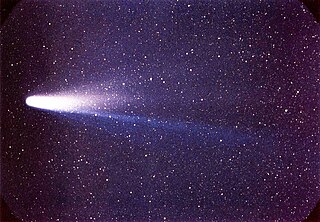
Halley's Comet, Comet Halley, or sometimes simply Halley, officially designated 1P/Halley, is a short-period comet visible from Earth every 75–79 years. Halley is the only known short-period comet that is regularly visible to the naked eye from Earth, and thus the only naked-eye comet that can appear twice in a human lifetime. It last appeared in the inner parts of the Solar System in 1986 and will next appear in mid-2061.
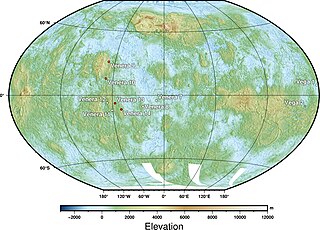
The Venera program was the name given to a series of space probes developed by the Soviet Union between 1961 and 1984 to gather information about the planet Venus.

Giotto was a European robotic spacecraft mission from the European Space Agency. The spacecraft flew by and studied Halley's Comet and in doing so became the first spacecraft to make close up observations of a comet. On 13 March 1986, the spacecraft succeeded in approaching Halley's nucleus at a distance of 596 kilometers. It was named after the Early Italian Renaissance painter Giotto di Bondone. He had observed Halley's Comet in 1301 and was inspired to depict it as the star of Bethlehem in his painting Adoration of the Magi in the Scrovegni Chapel.

Vega 1 was a Soviet space probe, part of the Vega program. The spacecraft was a development of the earlier Venera craft. They were designed by Babakin Space Centre and constructed as 5VK by Lavochkin at Khimki. The name VeGa (ВеГа) combines the first two letters from the Russian words for Venus and Halley.

A lander is a spacecraft that descends towards, then comes to rest on the surface of an astronomical body other than Earth. In contrast to an impact probe, which makes a hard landing that damages or destroys the probe upon reaching the surface, a lander makes a soft landing after which the probe remains functional.
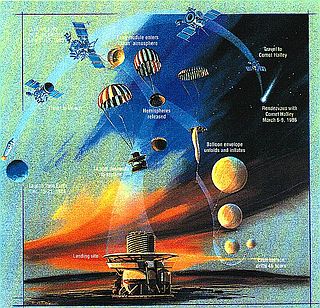
The Vega program was a series of Venus missions that also took advantage of the appearance of comet 1P/Halley in 1986. Vega 1 and Vega 2 were uncrewed spacecraft launched in a cooperative effort among the Soviet Union and Austria, Bulgaria, France, Hungary, the German Democratic Republic, Poland, Czechoslovakia, and the Federal Republic of Germany in December 1984. They had a two-part mission to investigate Venus and also flyby Halley's Comet.

Vega 2 was a Soviet space probe part of the Vega program to explore Halley's comet and Venus. The spacecraft was a development of the earlier Venera craft. The name VeGa (ВеГа) combines the first two letters Russian words for Venus and Halley They were designed by Babakin Space Centre and constructed as 5VK by Lavochkin at Khimki. The craft was powered by large twin solar panels. Instruments included an antenna dish, cameras, spectrometer, infrared sounder, magnetometers (MISCHA) and plasma probes. The 4,840 kilograms (10,670 lb) craft was launched on top of a Proton 8K82K rocket from Baikonur Cosmodrome, Tyuratam, Kazakh SSR. Both Vega 1 and 2 were three-axis stabilized spacecraft. The spacecraft were equipped with a dual bumper shield for dust protection from Halley's Comet.

Sakigake, known before launch as MS-T5, was Japan's first interplanetary spacecraft, and the first deep space probe to be launched by any country other than the USA or the Soviet Union. It aimed to demonstrate the performance of the new launch vehicle, test its ability to escape from Earth gravity, and observe the interplanetary medium and magnetic field. Sakigake was also supposed to act as a frame of reference for data received from probes that flew closer to Halley's Comet. Early measurements would be used to improve the mission of the Suisei probe launched several months later.

The Phobos program was an unmanned space mission consisting of two probes launched by the Soviet Union to study Mars and its moons Phobos and Deimos. Phobos 1 was launched on 7 July 1988, and Phobos 2 on 12 July 1988, each aboard a Proton-K rocket.

Suisei, originally known as Planet-A, was an uncrewed space probe developed by the Institute of Space and Astronautical Science.
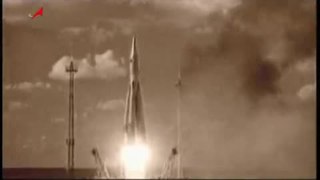
The Soviet space program was the national space program of the former Union of Soviet Socialist Republics (USSR), active from 1955 until the dissolution of the Soviet Union in 1991.
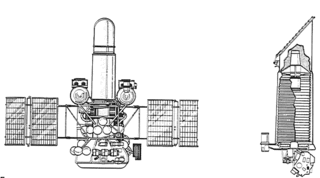
Astron was a Soviet space telescope launched on 23 March 1983 at 12:45:06 UTC, using the Proton launcher. Based on the 4MV spacecraft design and operational for six years, Astron was the largest ultraviolet space telescope of its time.

The Halley Armada is the name of a series of space probes, five of which were successful, sent to examine Halley's Comet during its 1986 sojourn through the inner Solar System, connected with apparition "1P/1982 U1". The armada included one probe from the European Space Agency, two probes that were joint projects between the Soviet Union and France and two probes from the Institute of Space and Astronautical Science in Japan. Notably, NASA did not contribute a probe to the Halley Armada.

Observations of the planet Venus include those in antiquity, telescopic observations, and from visiting spacecraft. Spacecraft have performed various flybys, orbits, and landings on Venus, including balloon probes that floated in the atmosphere of Venus. Study of the planet is aided by its relatively close proximity to the Earth, compared to other planets, but the surface of Venus is obscured by an atmosphere opaque to visible light.

The 3MV planetary probe is a designation for a common design used by early Soviet unmanned probes to Mars and Venus. It was an incremental improvement of earlier 2MV probes and was used for Zond 1, Zond 2 and Zond 3 missions to Mars as well as several Venera probes. It was standard practice of the Soviet space program to use standardized components as much as possible. All probes shared the same general characteristics and differed usually in equipment necessary for specific missions. Each probe also incorporated improvements based on experience with earlier missions.
Vesta was a planned multiple-asteroid-flyby mission that the Soviet Union assessed in the 1980s.
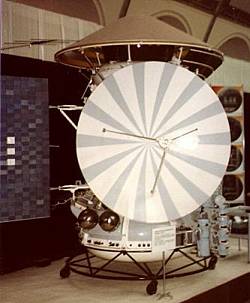
The 4MV planetary probe is a designation for a common design used for Soviet unmanned probes to Mars and Venus.

The MKF-6 is a multispectral camera that was designed and made in East Germany for the purpose of remote sensing of the earth's surface. The device was built by the Kombinat Carl-Zeiss-Jena in cooperation with the Institute for Electronics of the Academy of Sciences of the GDR, where optical elements for the Soviet space program were developed and produced since 1969.
















